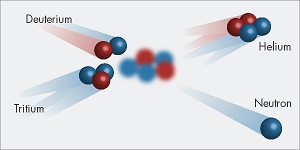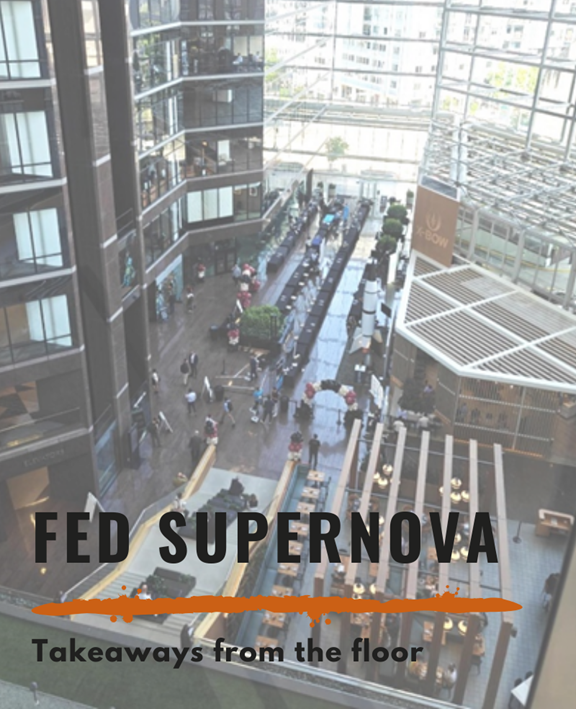Power your house for nine years with only 20 gallons of water and a laptop battery
Imagine being able to create almost unlimited energy from the Lithium in a single laptop battery and some water. Yes, the hydrogen in those sources could be used to create the same amount of energy as you’d get by burning 40 tons of coal: enough to power an average house for nine years. That’s what fusion could deliver, and why it’s often referred to as the Holy Grail of clean energy.
Fusion is the same process of energy production that occurs in the core of the sun. This energy creates no air pollution, comes without the threat of nuclear meltdown, has zero greenhouse gas emissions, and doesn’t create long-term radioactive waste.
2016 fusion research news
In February, Germany’s Wendelstein 7-X fusion reactor successfully managed to produce and contain hydrogen plasma for a quarter of a second at 80 million degrees Celsius.
Five days later, scientists at the Experimental Advanced Superconducting Tokamak (EAST) in China revealed that they had managed to produce and contain hydrogen plasma for a record 102 seconds at a lower temperature of 50 million degrees Celsius.
Why Fusion?
- Abundant fuels: For fusion, typically two isotopes of hydrogen are used to create helium. The reaction releases energy during the process. Deuterium can be extracted from water and Tritium is produced from Lithium, which is found in the earth’s crust (and your laptop’s battery). Fuel supplies will therefore last for millions of years.
- High energy output: On a per mass basis, fusion is more potent than fission, the energy source common in today’s nuclear power plants. With fusion, one gram of Deuterium provides approximately 275 million kcal. Fission gives a comparatively small 20 million kcal per gram of Uranium-235. Chemical energy, such as fossil fuels, is capped at around 10 kcal/g. Fusion produces 27.5 million times more energy per gram than fossil fuels.
- Safety: The small amounts of fuel used in fusion devices, about the weight of a postage stamp at any one time, means that a large-scale nuclear accident is not possible. Fusion creates little to no radioactive byproducts. Some plant components become radioactive, but these will be safe to recycle or dispose of conventionally within 100 years. In comparison, Uranium-235 has a half-life of 703.8 million years.
Sounds great. So, what’s the problem?
Fusion reactors work by heating particles to millions of degrees Celsius while suspending and containing the resulting plasma. The plasma is suspended so that the super-hot ions don’t touch, and therefore, melt the reactor. In this superheated state, the particles collide with each other and fuse together, releasing huge amounts of energy in the process.
There are two basic problems science is working to solve in order to make fusion energy a reality: heat loss and containment. An incredible amount of energy is used to heat and contain the plasma. The reactors must be able to maintain the temperature and containment long enough to achieve a net positive energy from the fusion reaction. There is recent fusion research using MATLAB that addresses these two issues.

Image credit: Popular Mechanics, New Development Could Help Solve Fusion Reactors’ Most Mysterious Problem
Heat loss
Earlier this year, MIT News reported: New finding may explain heat loss in fusion reactors. MIT research tackled the problem of heat loss due to two sources of turbulence, that caused by electrons and the larger-scale turbulence created by ions. The results are detailed in two papers published in the journals Nuclear Fusion and AIP Physics of Plasmas, by MIT research scientist Nathan Howard, doctoral student Juan Ruiz Ruiz, MIT Associate Professor Anne White, and 12 collaborators.
In the first paper, Multi-scale gyrokinetic simulation of tokamak plasmas: enhanced heat loss due to cross-scale coupling of plasma turbulence, extensive computer simulations showed that the turbulence on the electron scale, despite being approximately 1/60th the magnitude of that on ion-level, does coexist and has strong interactions with the larger-scale turbulence. In the 100 million degree Celsius plasma, the electron turbulence was shown to affect how heat was dissipated from the mass, despite long-held scientific beliefs that such turbulence was inconsequential.
The second paper, Stabilization of electron-scale turbulence by electron density gradient in national spherical torus experiment by lead author Juan Ruiz Ruiz, provided independent evidence of effects of the electron-scale turbulence. His research analyzed a number of experiments from the Princeton Plasma Physics Laboratory (PPPL), which were performed on a different type of reactor.
Ruiz Ruiz utilized MATLAB as an analysis tool. It was used to retrieve experimental data that is stored in a system called mdsplus. MATLAB was also used to post-process and analyze simulation data output from gyrokinetic code suites commonly used in the fusion community. For this research, two code suites were used: GS2 and GYRO. MATLAB was also used to plot the images in the article.
“MATLAB visualization tools, spectral analysis tools, the wide range of built-in functions, and great documentation online and in the product make MATLAB a very preferable tool for my research in fusion energy,” said Juan Ruiz Ruiz.
Containment
Containment is difficult to achieve. Intense heat and pressure inside a nuclear reactor is needed to get the atoms to overcome their natural tendency and to stick together, or fuse. But the intense heat and pressure cause instability in the plasma. This instability limits the efficiency, and therefore duration, of the fusion reaction.
Imène Goumiri, a graduate student at Princeton University, recently published a paper in the journal Nuclear Fusion, Modeling and control of plasma rotation for NSTX using neoclassical toroidal viscosity and neutral beam injection. Goumiri led the design of a controller that uses feedback from the sensors inside a reactor for real-time control of the rotation of the plasma using two different types of actuators: the first one injects high-energy neutral particles into the plasma, and the second relies on the magnetic coils to create a drag on the rotation of the plasma.
“Goumiri built a model of plasma rotation from data collected from PPPL’s National Spherical Torus Experiment (NSTX) before it was upgraded, and used it to construct the program in MATLAB software,” wrote John Greenwald and Raphael Rosen in the Princeton News. “She then translated the program into a predictive model based on PPPL’s TRANSP code, the global standard for analyzing plasma performance. The TRANSP model found the new approach to be effective at controlling rotation.”
This approach enables researchers to develop controllers from simulations based on experimental data. It does not require additional experiments for calibration. This brings two notable benefits: It requires fewer experiments for the existing reactor, and it provides a mechanism to test and adjust plasma rotation in fusion facilities that have yet to be built.
Unlimited energy forever: The Holy Grail of clean energy
While recent breakthroughs at government-sponsored reactors and leading research institutions are bringing us closer to reliable fusion energy, I must also note that there is considerable amount of work being completed at commercial fusion facilities. Both The New York Times and Time Magazine recently reported on companies that are taking a start-up approach to the fusion challenge. We will have to wait and see if sustainable fusion is achieved by VC-backed companies, or large, multinational sponsored reactors. Either way, fusion is a promising energy source that could help solve our energy crisis.










Comments
To leave a comment, please click here to sign in to your MathWorks Account or create a new one.